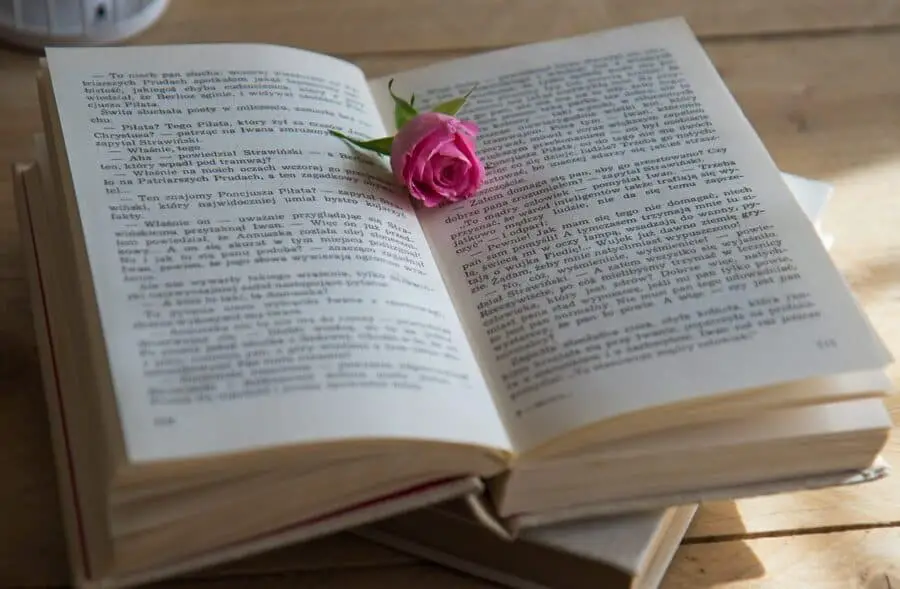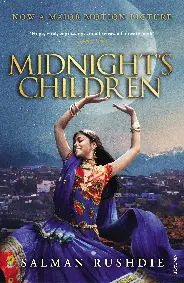Hey there, book enthusiasts (even if you’re not)! Welcome to my blog. As the title suggests, this article is all about showcasing the top 10 best novels by Indian authors in English. These literary gems are not only celebrated in the contemporary era but have also stood the test of time, remaining perennial favorites for readers of all ages.
Disclaimer: The list I’m about to share is curated from the collective experiences of my best friend and me, delving into the world of literature. I hope you find it insightful and enjoyable. Additionally, please note that some of the links provided are Amazon affiliate links. If you choose to purchase a book through these links, I may earn a commission at no extra cost to you.
10 Best Novels (of all time) by Indian Authors (English)
Picture yourself on a journey, with the landscape passing by in a blur outside the window. You’re still en route to your destination, with the rhythmic motion of the train or the steady hum of the bus providing a backdrop to your thoughts. So, what’s next? A few of the options are listening to music, songs, beats, etc. The other option which I prefer would be reading books.
Remember that Books are our best friends.
Aren’t they?
I could have provided you with the list of current or contemporary books and writers but I chose to differ. The list which I have prepared includes writers who have surpassed the time barrier and are still read widely all around the world despite the fact that I am talking about Indian Literature. We will be talking from the writers who are born in the 20th century to the writers who are born in 3 CE or 5 BC. I will also attempt to answer such questions like which is the best Indian Novel to read? The best love story is ever written in India? Who is the best Indian Author? Sounds interesting? Let’s start.
ARAVIND ADIGA: THE WHITE TIGER (One of the Best Novels)
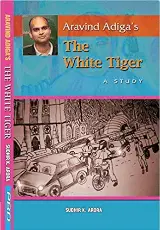 The answer to your question WHICH IS THE BEST NOVEL TO READ? The first writer which came to my mind and listed here is Aravind Adiga who is an Indian writer (of course) and also a journalist.
The answer to your question WHICH IS THE BEST NOVEL TO READ? The first writer which came to my mind and listed here is Aravind Adiga who is an Indian writer (of course) and also a journalist.
Quite astonishingly “The White Tiger” is Aravind’s debut novel.
I would be discussing this novel at length because this is the best one among these ten, I would recommend you to read. It might surprise you that the very first novel that is his debut novel won him critical appraisal and fame from all around the world. This novel won him the 40th MAN BOOKER PRIZE in the year 2008.
He dedicated it to the people of New Delhi where he lived and where he wrote this book. It is Britain’s best known and most generous literary award, given annually. As a matter of fact, I would like to highlight is that he is among the only four Indian-born authors to win this prize, after Salman Rushdie, Arundhati Roy (of which I will be talking ahead), and Kiran Desai.
Now let’s talk about the novel.
It is mainly a criticism and holds a satirical tone. Aravind explained that “criticism by writers like Flaubert, Balzac, and Dickens of the 19th century helped England and France become better societies”. The novel is about globalization, capitalism, and Americanization on the surface but when you read it and look into it deeper it is about their effect upon India and Indian society. Not the upper-class society but the lower-class ones.
Terribly it is a vivid exploration of India’s class struggle describing the inequalities and the widening gap between the rich and poor prevailing in Indian society and how the poor and lower class is trapped into “ROOSTER COOP”. This term is quoted in the novel itself to refer to the poor men as rooster who are trapped in the cage and are unable to free themselves and can do nothing but see the roosters slaughtered one by one. The protagonist of the story is Balram who belongs to the lower-class strata of the society.
The novel is a retrospective narration from Balram Halwai providing a darkly humorous perspective of class struggle. It has been well-received, making New York Times bestseller list. You won’t believe he was just 33 at that time and was the second youngest writer to win the Booker Prize. He says his novel “attempts to catch the voice of the men you meet as you travel through India – the voice of the colossal underclass”. “This voice is not captured,” he added, “and I wanted to do so without sentimentality or portraying them as mirthless humorless weaklings as they are usually.” the Novel is also said to be a quest of Freedom. I will try to keep them as short as possible.
ARAVIND ADIGA: THE WHITE TIGER is Conveniently Available on Amazon. Just Check Out The Special Offer at Amazon
SALMAN RUSHDIE: MIDNIGHT CHILDREN
Well, Sir Ahmed Salman Rushdie is a British Indian novelist and also an essayist. His work’s theme is mainly a combination of magical realism with historical fiction. Primarily concerning itself with disruptions arising out of migrations between Eastern and Western civilizations, setting his fiction on the Indian subcontinent mostly.
You may be aware of the fact that he is one of the most controversial writers due to his book “SATANIC VERSES” (his fourth novel)
Let me recount some of his achievements Queen Elizabeth II knighted him for his service to English Literature in June 2007. THE TIMES ranked him 13th on its list of 50 greatest British writers since 1945 in the year 2008.
Now we come to the novel “Midnight Children”. It is his second novel and also won him the BOOKER PRIZE in 1981 and was deemed to be “the best novel of all winners” on 25th and 40th anniversary of the prize in 1993 and 2008 respectively, and still is a masterpiece – the best of all-time prize winners.
The novel is divided into three books.
It is about the life of a child who is born at the stroke of midnight hour exactly when India was partitioned and got independence an epoch marking the beginning of a new history of India. It picturizes the boy as supernatural with some magical powers endowed upon him.
This power was telepathic and connected him to all the other children who were born into that hour and the three children (including him) who were born closest to the hour had greater powers than others. The chief protagonist’s story is set in the context of actual historical events.
Saleem, the boy, using his special powers organizes a Midnight Children’s Conference, reflecting the issues that India had faced in its early statehood concerning the cultural, linguistic, religious, and yet an endless list of the issues faced by this diversified nation. Therefore, this novel also reflects the theme of magical realism combined with historical fiction. This novel also won the JAMES TAIT BLACK MEMORIAL PRIZE in 1981. It was also secured in the list of GREAT BOOKS OF THE 20th CENTURY, published by Penguin Books. The book sold over one million copies in the U.K. alone.
ARAVIND ADIGA: THE WHITE TIGER is Conveniently Available on Amazon. Just Check Out The Special Offer at Amazon
ARUNDHATI ROY: THE GOD OF SMALL THINGS
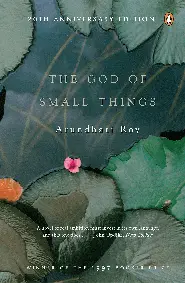 Now, we come to our third (and the first female writer in our list) writer in the list – Suzanna Arundhati Roy.
Now, we come to our third (and the first female writer in our list) writer in the list – Suzanna Arundhati Roy.
She is an Indian author best known for her work in 1997 “The God of Small Things” (of course). The book won her MAN BOOKER PRIZE FOR FICTION in the same year, 1997. The book became the bestselling one, especially by a non-expatriate Indian author.
You would like to know that she is also an activist in the field of politics involving herself in human rights issues and environmental causes. You would also like to know that she was born to a female women’s rights activist in Meghalaya. Enough of the writer (I am trying to keep it as short as possible so that I do not bore you).
Let me jump to the book already.
So “The God of Small Things” is her very first novel- yes you got it right! It’s her debut novel which she began to write in 1992 and completed in 1996. The book is said to be semi-autobiographical. The books catapulted her to international fame. It was also listed as one of THE NEW YORK TIMES NOTABLE BOOKS of the year.
It secured the fourth position in the Bestsellers list by THE NEW YORK TIMES for independent fiction.
The book was a huge commercial success and brought her an advance of half a million pounds. The novel was greeted by unprecedented attention from critics, pundits, and media alike.
The book was a very personal account of a tragic love story crossing the religious and caste differences of the country along with the political divides, as told through the eye of twin children. The book is daring its theme and innovative in language and concept.
The book won international acclaim and secured the prestigious BOOKER PRIZE to the author (as I told you earlier).
Happily announcing, she is the first Indian writer to win that award. At that time, when asked in the interview she said she didn’t consider herself a writer: she just had to write that novel, not knowing whether she had another novel in her mind. She used this celebrity status to voice the unheard people and to become “a writer for the victims of Modernity”.
Unique among the intellectuals, she publicly condemned the govt. For its decision to launch nuclear tests in 1998 in an essay- long and passionate- published simultaneously in India and Pakistan. Wasn’t she daring not only in her writing but in real life too? Yeah, I know impressive right!
Let me introduce the reviews and reviewers of her work. It received stellar reviews in major American Newspapers such as THE NEW YORK TIMES and LOS ANGELES TIMES: a “dazzling first novel”, “extraordinary”, “at once so morally strenuous and so imaginatively supple” and “a novel of poignancy and considerable sweep” respectively. TORONTO STARS (Canadian Publications) reviewed it as “a lush, magical novel”.
According to Hindustan TIMES, it is one of the 5 best books of 1997.
Allow me to quote the exact lines from the book itself “the secret of the Great Stories is that they have no secrets. The Great Stories are the ones you have heard and want to hear again. The ones you can enter anywhere and inhabit comfortably. Give it a try.
ARUNDHATI ROY: THE GOD OF SMALL THINGS is Conveniently Available on Amazon. Just Check Out The Special Offer at Amazon
JHUMPA LAHIRI: THE NAMESAKE
 Nilanjana Sudeshna Jhumpa Lahiri is born to Indian immigrants from the state of West Bengal (born in London) American author known for her short stories, novels, essays in English.
Nilanjana Sudeshna Jhumpa Lahiri is born to Indian immigrants from the state of West Bengal (born in London) American author known for her short stories, novels, essays in English.
More recently, she is writing in Italian. “The Namesake” is her debut novel which was adapted into a film of the same name. In a way this novel is semi-autobiographical. Her short story collections won her Pultzer Prize for fiction, PEN/Hemingway Award, Frank O’Connor International Short Story Award.
In the editorial column of “Newsweek”, she claims that she has “felt intense pressure to be two things, loyal to the old world and fluent in the new”.
It depicts the conflict between the teachings of her Indian parents and being a citizen of America. Her childhood experiences growing up were marked by these two sides of conflicts tugging away at one another. But when she became an adult, that conflict faded away as she realized that she can be a part of both the dimensions without embarrassment and the struggle to choose the right one.
She was graduated with B.A. English Literature, and later received multiple degrees such as M.A. in English, M.F.A. in Creative Writing, M.A. in Comparative Literature, and Ph.D. in Renaissance Studies. That’s all for now.
JHUMPA LAHIRI: THE NAMESAKE is Conveniently Available on Amazon. Just Check Out The Special Offer at Amazon
SASHI THAROOR: THE GREAT INDIAN NOVEL
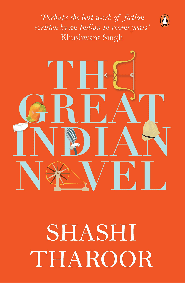 Coming to our next writer, none other than Mr. Sashi Tharoor, a great Indian politician, and much greater of a writer.
Coming to our next writer, none other than Mr. Sashi Tharoor, a great Indian politician, and much greater of a writer.
He has been a columnist in two of the best-known English newspapers of India such as “The Hindu” and “The Times of India”.
He began writing at the age of just six, the time when we had no idea even about the words. Much impressive is the fact that his first story was published when he was just 10 years old in Mumbai. He has lectured widely on India and is often quoted for his witty observations, including, “India is not, as people keep calling it, an underdeveloped country, but rather, in the context of its history and cultural heritage, a highly developed one in an advanced state of decay”
Now, let’s talk about the book.
The Great Indian Novel is satirical in its style and theme, published in 1989. The fiction inspired by the great epic poem of India “Mahabharata”, recasts and resets it in the context of India during the Independence Movement and three later decades of the post-colonial era. The figures from the epic ancient mythological Indian history are transformed into the modern historical figures of India.
Even some critics have identified an element of subversion itself in the novel. The novel includes numerous puns and allusions to great writers such as Rudyard Kipling and E.M. Forster.
Try reading the novels by these two writers too they are simply just genius. “where Angel Fears to Tread” by E.M. Forster is among the classics. Mahabharata is a tale about the struggle among the clan for the throne and kingdom between themselves. In the novel, this has been reset by Tharoor as a struggle between groups and individuals closely related by their common political and personal histories. The title of the novel is an allusion to the long-standing idea of the “Great American Novel”.
This also suggests the pun involved in it, roughly translating “Mahabharata” i.e., Maha- Great and Bharata- India. According to him, it represents Hinduism as a great literary achievement. Thus, it serves as a paradigm to retell Indian history. The novel also contains 18 “books” just as the Mahabharata has. Emma Lee-Potter listed the novel as one of the 12 best Indian Novels recently in the year 2020.
SASHI THAROOR: THE GREAT INDIAN NOVEL is Conveniently Available on Amazon. Just Check Out The Special Offer at Amazon
RABINDRANATH TAGORE: GITANJALI
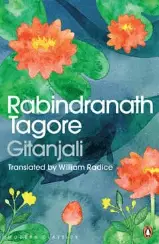 You are Indian, and never heard of Rabindranath Tagore, you are really not born in India.
You are Indian, and never heard of Rabindranath Tagore, you are really not born in India.
His works are written in Bengali, as he was born in undivided India. He was a poet, writer, composer, social reformer, philosopher, and painter. He played a vital and important role in reshaping Bengali Literature, music, and Indian Art with contextual Modernism.
He is the author of the “profoundly sensitive, fresh and beautiful verse” of GITANJALI.
He became the first non-European and the first lyricist to win the Nobel Prize in Literature in the year 1913. His poetic songs are viewed as spiritual and mercurial. He is also known for his “elegant prose and magical poetry”.
The sad thing is these great works are largely unknown outside Bengal because of the language barrier as his works are in Bengali. He is also known as “the Bard of Bengal”. He started writing poems just at the age of 8. At the age as early as an 8-year-old, he released his first substantial poems under the pen name ‘Bhanusimha’. He modernized Bengali (Indian) art by wavering from rigid classical forms and resisting linguistic structures.
The topics of his novels, stories, songs, dance-dramas, and essays are widely political and personal. Gitanjali is a collection of songs written by him which can roughly be translated in English as “Song Offerings”.
It is one of his best works. Even best of the best. His works are acclaimed for their lyricism, colloquialism, naturalism, and unnatural contemplation. Not surprisingly, his compositions (the songs) were chosen by two Nations as National Anthems: India’s JANA GANA MANA’ and Bangladesh’s AMAR SHONAR BANGLA’. The Sri Lankan national anthem is also inspired by his works.
Allow me to quote him “I’m lost in the middle of my birthday.
I want my friends, their touch, with the earth’s last love. I will take life’s final offering; I will take the human’s last blessing. Today my sack is empty. I have given completely whatever I had to give. In return if I receive anything – some love, some forgiveness – then I will take it with me when I step on the boat that crosses to the festival of wordless end.” if I remember it right this very quote is from Gitanjali. This means I might be wrong.
He has written thousands of songs and also travelogues. His prose contains high regard. His works are noted for their rhythmic, optimistic, and lyrical nature. His writings are inspired from life of common people. His experience with drama began when he was just 16. He wrote his original first drama ‘Valmiki Pratibha’ at the age of 20.
He himself stated of his dramas that his works sought to articulate “the play of feeling and not of action”.
Once when he was interviewed by Einstein, on 14 April 1930 he remarked “our passions and desires are unruly. But our character subdues these elements into a harmonious whole.
Does something similar to this happen in the physical world? Are the elements rebellious, dynamic with individual impulse? And is there a principle in the physical world which dominates them and puts them into an orderly organization?
Now coming to Gitanjali back, the collection of poems and his works won him the Nobel Prize for Literature. It (Gitanjali) is also a part of the UNESCO Collection of Representative Works. The central theme of the collection is devotion, and its motto is “I am here to sing thee songs”.
RABINDRANATH TAGORE: GITANJALI is Conveniently Available on Amazon. Just Check Out The Special Offer at Amazon
KALIDASA: MALVIKAGNIMITRA
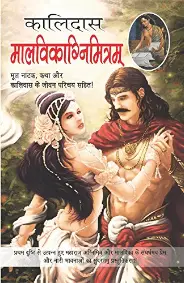 Kalidasa, the classical Sanskrit writer who is considered as the greatest playwright and dramatists of ancient India who has not lost the relevancy even today.
Kalidasa, the classical Sanskrit writer who is considered as the greatest playwright and dramatists of ancient India who has not lost the relevancy even today.
His works such as plays and poems are largely based upon the Vedas, The Ramayana, The Mahabharata, and the Puaranas.
To our great agony most of his works are lost in the motion of time, the surviving works are three plays, two epic poems, and two short (comparatively shorter) poems.
After that, you are well aware of his genius.
Let’s quickly come to the work “Malvikagnimitram”.
It is the first ever play written by him. It sustains a playful and comical mood throughout the play. This is a love story of a king named Agnimitra who has fallen in love with a servant girl Malvika but as Love follows no rule, he couldn’t control his feeling. Out of jealousy, the chief queen imprisoned her but finally…….try to read it.
Kalidasa has had great influence on several works written in Sanskrit, and on all Indian Literature. He also had a greater impact on Tagore. The theme of Meghaduta’s romanticism is found in Tagore’s poem on the monsoons. Here comes the answer to who is the best romantic writer? and which is the best romantic story? Read Malvikagnimitram. Not only in India he has influenced the European writers if late 18th and early 19th century.
According to Carnegie, Sir William Osler (known as Father of Modern Medicine) always kept a poem written by Kalidasa on his desk. Not much to your surprise, Kalidasa is also known as SHAKESPEARE OF INDIA. What could have been better than this to bestow upon him the highest form of eulogy? A legend makes him one of the “nine gems” at the court of Vikramaditya of Ujjain.
KALIDASA: MALVIKAGNIMITRA is Conveniently Available on Amazon. Just Check Out The Special Offer at Amazon
VATSAYAN: KAMA*

He is an ancient Indian philosopher popularly known for his work: Kama*. Well as we all know India does not talk openly about s*x education. This book is rather an exception to this claim.
following the teachings of Vedas and Puranas of four Purusharthas in Life that are DHARMA (way of living), ARTHA (Money), KAMA, and MOKSHA.
Well, to your dissatisfaction the book is not only about sensual activities but written as a guide to the art of living well, the nature of love, finding a soulmate, and other aspects of amoral relationships in addition to a S*x manual. The text is a mix of prose and verse.
It lists desire, sexuality, and emotional fulfilment as one of the goals in life. Do many chapters discuss the methods of courtship as how to woo a woman? Training in the art of engaging yourself socially,
flirting yeah you heard it right- flirting, a lot more.
A major part of the book is about the philosophy and theory of love as to what triggers love? Desire? And what sustains it? The Kama* became one of the most pirated books in the English Language.
VATSAYAN: KAMA* is Conveniently Available on Amazon. Just Check Out The Special Offer at Amazon
PREMCHANDRA: NIRMALA & GODAAN
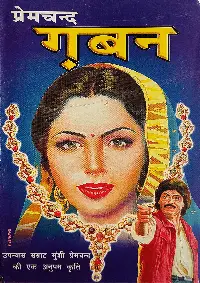
Prem Chandra!
Yes, Munshi Premchandra I am sure you must have spent your childhood reading his short stories not because of the fact that how great he was but because it was highly prescribed in your syllabus Hindi.
I am sorry if you have not read his stories in your childhood did you even lived your childhood to the fullest? Give a reading to it.
Not describing it in detail. But let me brief you with some basic details it is mostly about an Indian Conservative Household and depicts the real setting of the Indian family.
Try reading Godaan also,
PREMCHANDRA: NIRMALA is Conveniently Available on Amazon. Just Check Out The Special Offer at Amazon
R.K. NARAYAN: BACHELOR OF ARTS
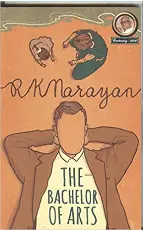 The Indian English Writer, Who has written about original India in English.
The Indian English Writer, Who has written about original India in English.
His works are nothing less than great. The novel “BACHELOR OF ARTS” is about a student who is a great vocal or orator in a college and is deeply in love with a girl but because of class clashes and typical Indian family he is denied his love and eventually he becomes a Sanyasi but soon repent it and realizing the mistake comes back.
It is a part of Narayan’s Trilogy.
Try reading all three novels. The novel also mirrors orthodox Indian thinking.
Well, that is all for today, I don’t want to take your more time.
Therefore, I have just provided a brief insight to you into these great Indian writers and their works.
Hope you would enjoy reading it. Stay safe, stay happy.
R.K. NARAYAN: BACHELOR OF ARTS is Conveniently Available on Amazon. Just Check Out The Special Offer at Amazon
Hope you like the article Top 10 Best Novels (of all time) by Indian Authors in English. Do try some Good Dark Chockletes while reading books, It helps increase antioxidants in your body and stay calm or relaxed. Also, Not forget to share the article with your friends and family!
